Col George Vincent Fosbery, V.C., was a definite devotee of small arms design as well as being a bona fide war hero – a combination that isn’t as common as one might expect. He is best known today for his Webley-Fosbery automatic revolver and Paradox double guns, but he also developed a breech loading rifle for military trials in England. When the British military invited inventors to submit breechloading rifles for potential military contracts, they received guns from more than 50 different applicants. The Snider conversion of the 1853 Enfield musket was ultimately selected, but a few examples of the other trials guns still exist, including this Fosbery breechloader.

The design used a vertically pivoting breechblock, similar to the American “trapdoor” Springfield conversions. To open the action, one would first cock the weapon, and then pull rearward on the large round handle on the right-hand side of the lock. This handle would hit the curved plate attached to the breechblock, and force it upwards and open. As the block lifted out of the receiver, the extractor would pull the empty case out of the chamber, allowing the shooter to manually toss it from the gun.
When closed, the breechblock is held in place by a spring-loaded detent at the right rear of the block. This is only to prevent it from opening due to rough handling, though – another mechanism acts to lock the breech closed when firing.
The Fosbery rifle was designed for brass-cased centerfire cartridges, and a firing pin protrudes from the middle of the breechblock. This firing pin is hit be a striker located in the center of the receiver behind the breechblock, which travels directly in line with the bore. The striker is a fairly large diameter piece, and enters about 3/8 of an inch into the breechblock before contacting the firing pin itself – and thus the striker acts as a locking piece preventing the breech from opening until it is manually recocked by the lever on the right side of the gun.
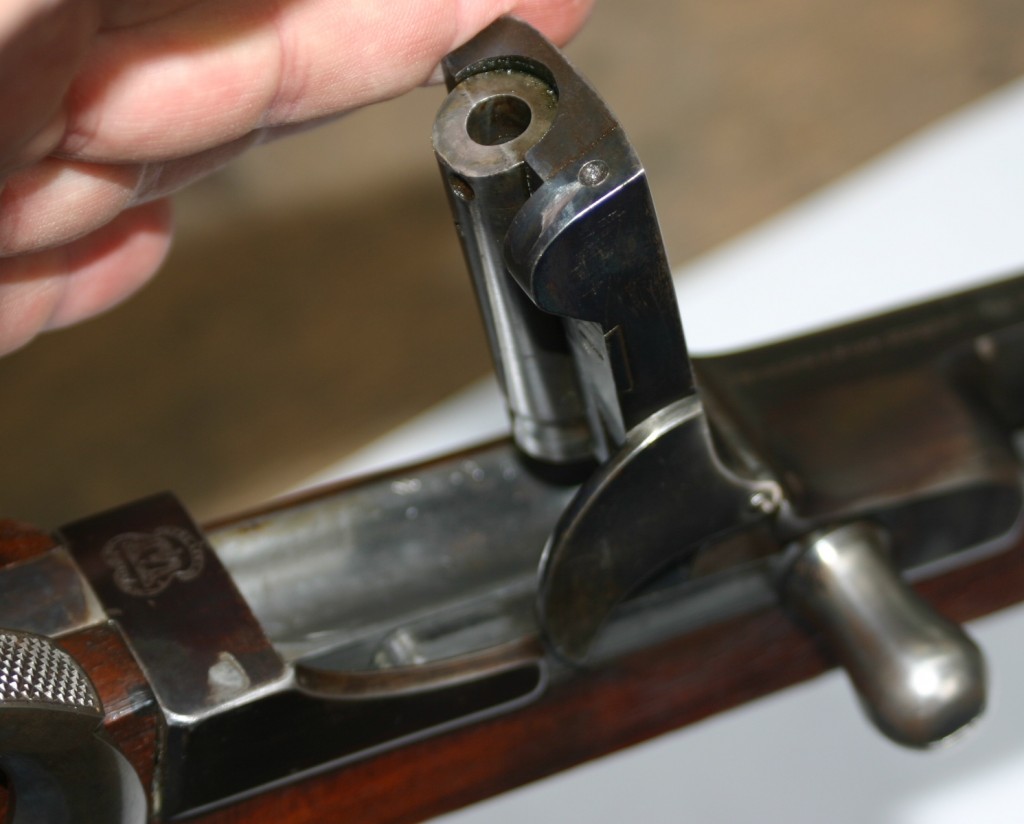
Pictures
[nggallery id=198]

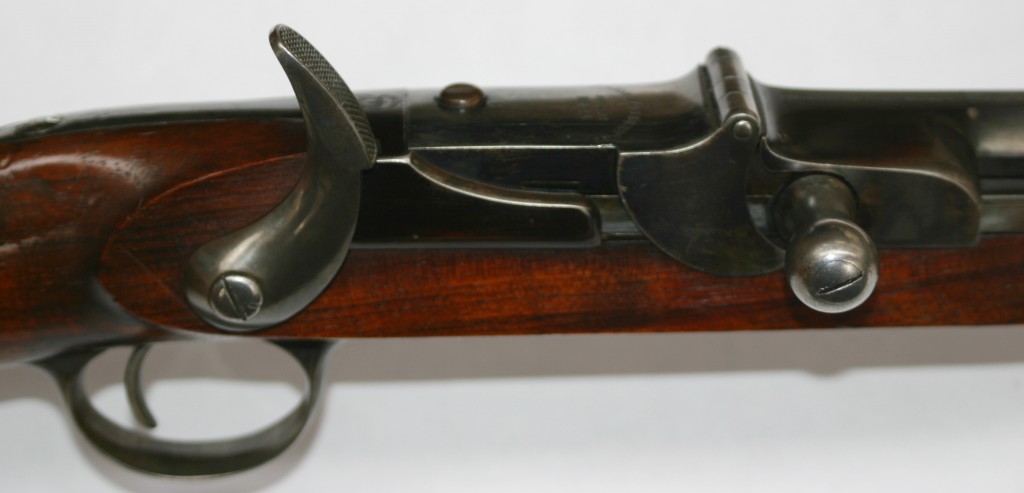
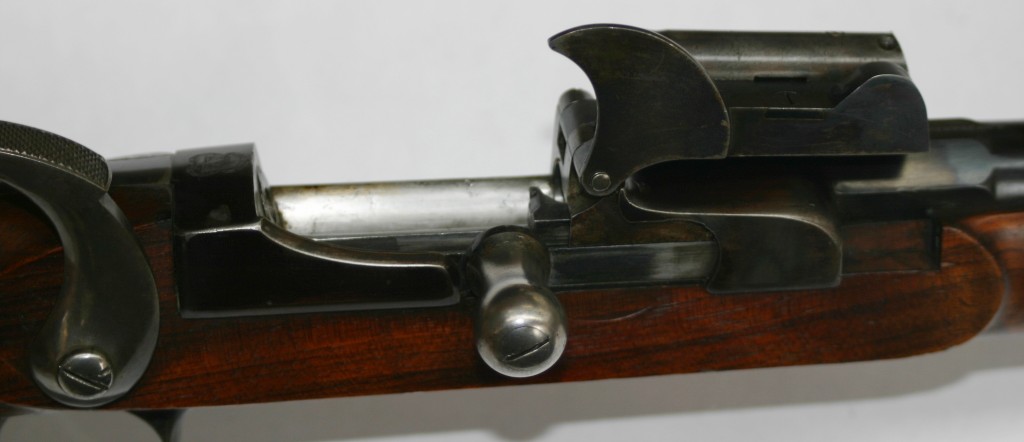
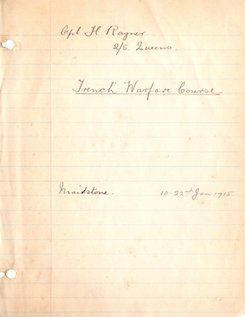
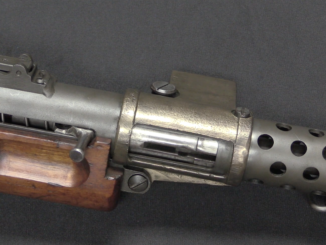
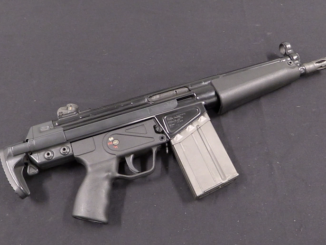
I always thought the British development of small arms at that time curious, both a huge step forward with the metal cartridge and a big step sidewards with their mechanism selection. The cartridge was clearly superior to the needle fired paper cartridges used by the Germans and French, but it took them until 1888 to see the advantage of a bolt in extracting a cartridge.
Remember that the original centerfire cartridges were fabricated from soldered, helically wound brass or copper strip. Drawn, one piece cartridge cases are first made in volume in the 1880’s. These hinge mechanisms seem to be designed to deliver gentle primary extraction which would keep fabricated cartridges from tearing.
Remember that this was for converting rifles inexpensively. Plus the military distrust of repeating firearms. Don’t want the soldiers wasting ammo, after all. this makes them take their time when shooting.
That is an absolutely beautiful example of the rifle. It appears to be in 100% or near 100% mint condition. Did you happen across this particular speciman during your European tour last year?
I think John D. has a pretty relevant point about fabricated cartridges and gentler primary extraction. Perhaps there is still another equally logical possible explanation?
Yep, it’s in a private collection in Europe.
If you changed the extractor to the design from the Trapdoor Springfield and used a similar ejector at the rear of the trough, you would have one fast-shooting breach-loader.
While on the subject of early British breach-loaders, here is an excellent video showing a few being shot: http://www.youtube.com/watch?v=tK3k1qeZjv4
and the thread I found it in: http://britishmilitariaforums.yuku.com/topic/10008/video-of-MH-speed-loader?page=1#.UcU3ENjhfyt
Nice find, loads of creative actions to be seen in the movie.
Hi Ian,
Do any reports exist on how the Fosbery entry performed?
I’m sure there is a testing report buried in a British archive somewhere, but I haven’t found it yet.
It’s an interesting rifle, by appearances better thought out than a lot of its contemporaries. I imagine it was at least marginally more expensive to make than the Snider.
It resembles an Albini.
Hi, Andrew :
Thanks for the hint about the Albini. I looked it up and there seems to be a lot of similarity between the two rifles.
My understanding is that the 1867-1868 trials were looking for a replacement for the Snyder. The Fosbery was good, but the Martini was chosen.
The Snider was debugged in 1853 and introduced to the army in 1866.
The Martini was first issued to the army in 1871.
the fosbery did very well in the trial of 1867 i now own the rifle in this thread and have copys of all the reports the martini was choosen for vey good reason.The main reason being the cartridges of the time having issues with very sensitive primers and the bolt actions of the time having a problem with setting the round off on bolt closure.As the martini is a pivot block it was found to be less of an issue.There were other reasons as well.
Hey Ian, I am the great great grandson of Col. Fosbery VC I was wondering if you had taken any good closeups of the coat of arms and if so if I could acquire them from you
Sorry, I don’t.